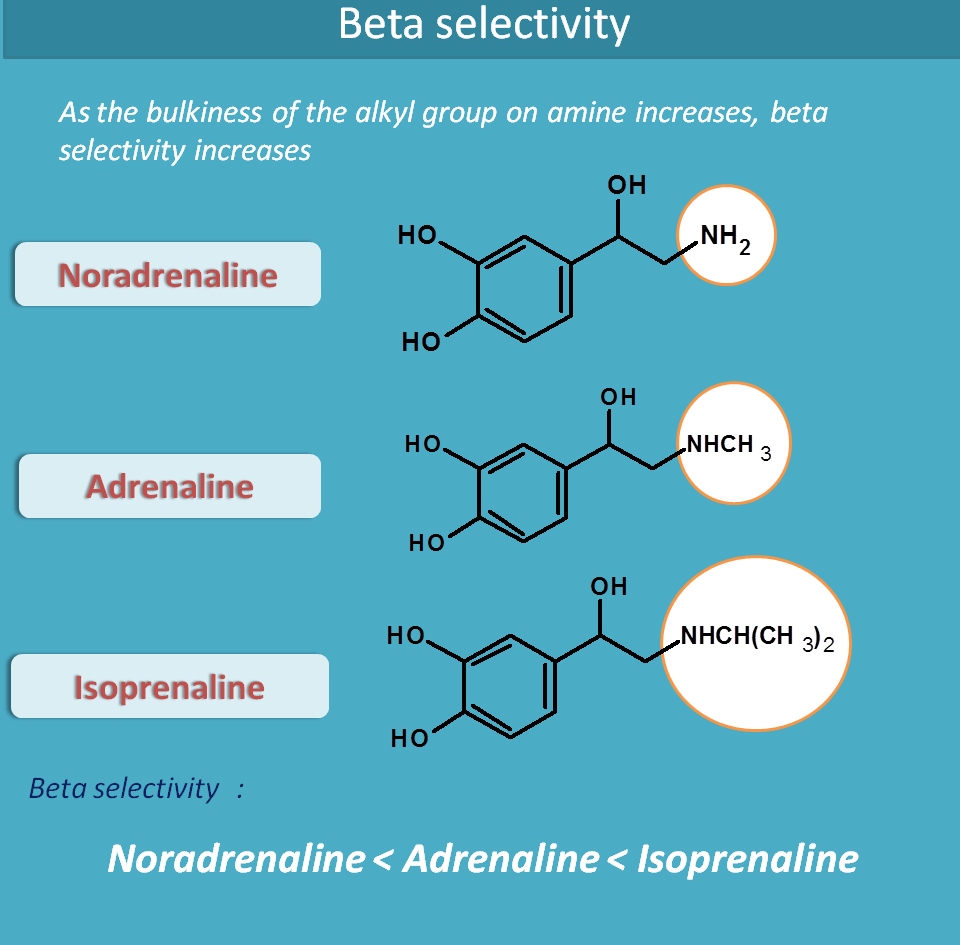Adrenergic agonists -Introduction
These are the drugs which increase adrenergic transmission and therefore produce all effects shown by sympathetic system. Hence these drugs are called as sympathomimetics.
In the previous article we have discussed that norepinephrine acts as neurotransmitter in sympathetic system and epinephrine is a hormone released into the blood from adrenal medulla. These mediators are also called as catechol amines.
Catechol amines
What are the catechol amines?
These are the chemical mediators or drugs with catechol group and an amine side chain in their structure. Examples include dopamine, epinephrine, norepinephrine.

Isoprenaline is a synthetic catechol amine and all other catechol amines are endogenous obtained from the tyrosine.
Non-catechol amines
Various adrenergic agonists can be produced by structural modification of these catechol amines. Of these one of the important modifications that produces beat selectivity is alkyl substitution on amine nitrogen.
It was experimentally found that isoprenaline is highly selective for beta receptors and norepinephrine for alpha receptors. Based on this evidence and study of further structural activity relationships, the following statement can be concluded.
As the bulkiness of alkyl group on nitrogen increases, beta selectivity increases.

This can be easily observed in catechol amines. Isoprenaline has isopropyl group on nitrogen hence highly selective for beta receptors whereas norepinephrine has no alkyl group hence more selective for alpha receptors. Epinephrine has small alkyl group such as methyl group hence it is selective for both alpha and beta receptors.
We will see more details of catechol amines in the next sections.